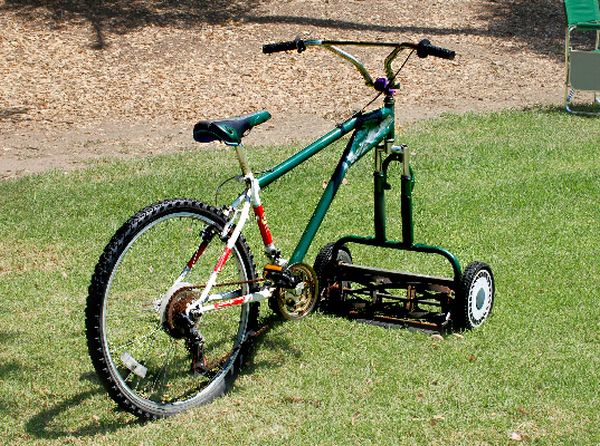A passive house is not just another low energy building. While standard energy star homes enjoy energy savings of up to 30%, a passive home enjoys energy savings of up to 90%. And while the elements that go into building a passive home may be expensive, you would surely reap the return on these investments in the next couple of years.
Why we need energy efficient houses?
The world is standing at the brink of a possible energy crisis. Although some scientists are saying that renewable energy might go mainstream and it might save us from this, there’s no way we can be sure. Even to produce renewable energy, for example, solar energy, we need rare elements like Silicon and Lithium. These have limited reserves all over the world and might not prove to be the definitive solution that we are looking for. However, on an individual level, there’s one way to tone down this danger. It is by converting our houses into a passive house for energy conservation.
If you are wondering How to Make Your Home More Energy Efficient and Save Money, then the answer lies in this article. Out of the many techniques, there are in the market, one of the solutions you can opt for is a passive house for energy conservation. This is a concept that helps to reduce the energy consumption of your house and reduce your energy bills as well. This concept helps to make homes economically, and produce a good microclimate in a building.
What makes passive homes so energy efficient?
Passive houses consume less than quarter of the energy required for a standard building. The passive house for energy conservation is a concept that does not need a separate heating system. This is because it has heat recovery ventilation for conserving energy.
The initial investment in a passive house may be larger than in a normal house, but the operating and life cycle expenses will be remarkably lower than in a normal house. It has environmental benefits, economical benefits, social benefits and benefits for inhabitants. Here we share 7 ways to get a passive house for energy conservation:
7 Ways to convert your house to passive house for energy conservation
1. Solar design and landscape
 One of the best things about the passive house is that the design is not only beautiful to look at but beneficial as well. These sorts of houses help to preserve energy and make a perfect edition to any community or neighborhood. You can also use these buildings to maximize passive solar gain. While conceptualizing these sorts of houses the main factor that you have to keep in mind is the placement of the windows.
One of the best things about the passive house is that the design is not only beautiful to look at but beneficial as well. These sorts of houses help to preserve energy and make a perfect edition to any community or neighborhood. You can also use these buildings to maximize passive solar gain. While conceptualizing these sorts of houses the main factor that you have to keep in mind is the placement of the windows.
A Passive house for energy conservation can get the maximum benefit when the window orientation is in place. Windows-oriented towards the equator south in the northern hemisphere and north in the southern hemisphere. If you are remodeling your home, try to get the south windows enlarged. For people living in hot climate region should take precaution in putting widow glass as it causes overheating.
2. Super insulation
 Another aspect of a passive house for energy conservation is the super insulation. In comparison to conventional homes, these eco-friendly homes help to prevent the heat from seeping inside. Mostly, hot air flows in through the walls and roofs of the house apart from the gaps on the floors. To prevent this from happening, you need to ensure that you have a good insulation in place.
Another aspect of a passive house for energy conservation is the super insulation. In comparison to conventional homes, these eco-friendly homes help to prevent the heat from seeping inside. Mostly, hot air flows in through the walls and roofs of the house apart from the gaps on the floors. To prevent this from happening, you need to ensure that you have a good insulation in place.
Although there is a wide range of thermal insulation materials in the market, none of them can really do much if you do not pay attention to the way you design your house. You need to pay special attention to eliminate the thermal bridges to provide the high R-Value. While doing this, you also need to remember that given the fact that these extra dimensions helps in many ways, it also reduces the internal floor area.
3. Plant trees
 One of the easiest energy conservation home techniques is planting trees. If you are planning to convert your home into a passive house, trees will help in various ways. During the summers, it will help to keep the immediate surroundings cool. In winters, they help to reduce the impact of the cold climates in many ways and act like windbreakers.
One of the easiest energy conservation home techniques is planting trees. If you are planning to convert your home into a passive house, trees will help in various ways. During the summers, it will help to keep the immediate surroundings cool. In winters, they help to reduce the impact of the cold climates in many ways and act like windbreakers.
By planting differently sized trees in and around your house will benefit you and help to keep your bills under control. Plant shade trees on the east and west sides of your home to shade low angle, morning and evening summer. Grow large evergreen trees on the appropriate side of your home to shelter it from prevailing winter winds.
4. Air tightness
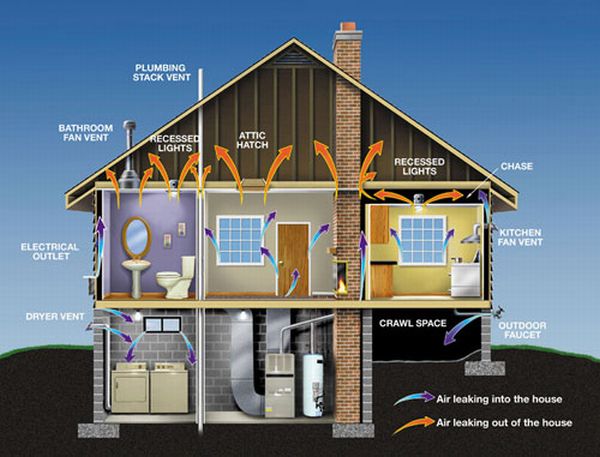
Building envelopes in a passive house for energy conservation can make a big difference. They are nothing but physical separators between unconditioned and conditioned environments’. These barriers help to seal the construction joint care gully to enhance air-tightness. The building envelope is also a perfect way to enhance the mechanical ventilation system to recover the heat before discharging the air externally. They equally contribute to the properties of ecofriendly homes
5. Ventilation of the passive house for energy conservation
 The passive method of natural ventilation plays a big impact in ecofriendly homes. With the help of a singular or cross ventilation, you can enhance the efficiency of the house. This is possible with the help of smaller and larger ingress windows. Even clerestory openable skylights will help to generate the necessary results. The alternate method is to use a heat exchanger for the earth to air property. This will help to reduce the heat within the house drastically.
The passive method of natural ventilation plays a big impact in ecofriendly homes. With the help of a singular or cross ventilation, you can enhance the efficiency of the house. This is possible with the help of smaller and larger ingress windows. Even clerestory openable skylights will help to generate the necessary results. The alternate method is to use a heat exchanger for the earth to air property. This will help to reduce the heat within the house drastically.
6. Space heating
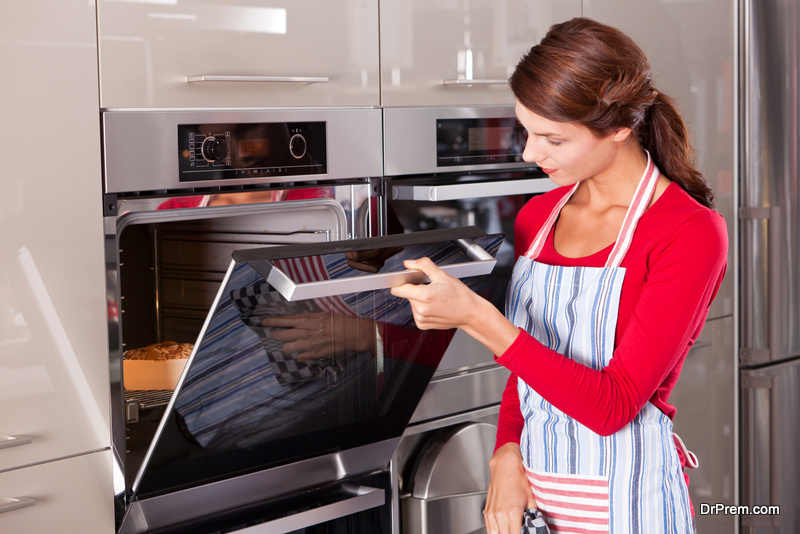 Passive houses make extensive use of their intrinsic heat from internal sources such as waste heat from lighting, while goods i.e. major appliances and other electrical devices but not dedicated heaters as well as body heat from the people and other animal inside the building. This is due to the fact that people on average emit heat equivalent to 100 watts each of radiated thermal energy. Together with the comprehensive energy conservation measures taken, this means that a conventional central heating system is not necessary although they are sometimes installed due to client skepticism.
Passive houses make extensive use of their intrinsic heat from internal sources such as waste heat from lighting, while goods i.e. major appliances and other electrical devices but not dedicated heaters as well as body heat from the people and other animal inside the building. This is due to the fact that people on average emit heat equivalent to 100 watts each of radiated thermal energy. Together with the comprehensive energy conservation measures taken, this means that a conventional central heating system is not necessary although they are sometimes installed due to client skepticism.
7. Lighting and electrical appliances
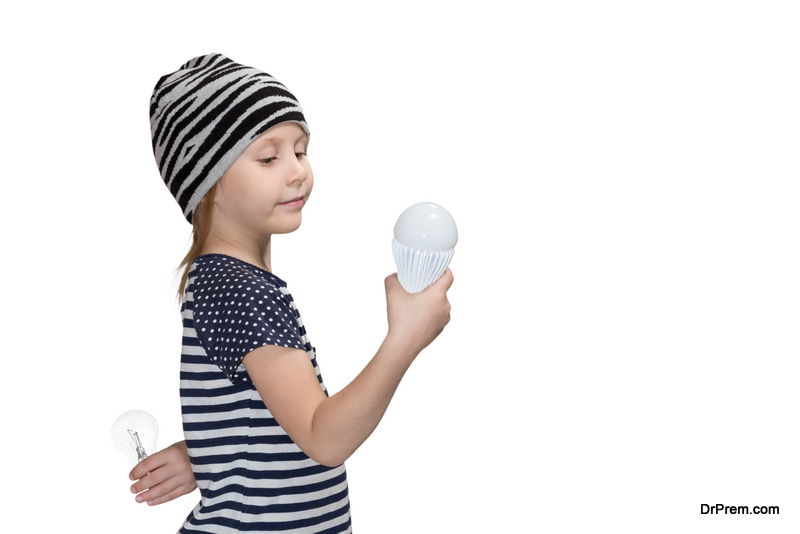 Another ideal way to maximize the energy efficiency of your house is to adapt the lighting technique. You can choose to go with sustainable lighting during the night and stick to the low or no light during the day. LED lamps and lights are equally helpful and add to your home decor using low energy sources such as standard voltage compact fluorescent lamps and solid-state lighting with light emitting diode (LED lamps) will also do the trick. Organic light emitting diode and polymer light emitting diodes (PLED) and low voltage electrical filament incandescent light bulbs. Other options also include the use of compact metal halide, xenon and halogen lamps.
Another ideal way to maximize the energy efficiency of your house is to adapt the lighting technique. You can choose to go with sustainable lighting during the night and stick to the low or no light during the day. LED lamps and lights are equally helpful and add to your home decor using low energy sources such as standard voltage compact fluorescent lamps and solid-state lighting with light emitting diode (LED lamps) will also do the trick. Organic light emitting diode and polymer light emitting diodes (PLED) and low voltage electrical filament incandescent light bulbs. Other options also include the use of compact metal halide, xenon and halogen lamps.
Benefits of a Passive House
Apart from energy savings, a passive house has several other potential benefits it can offer homeowners. These include:
1. Zero Energy Possibility
 While building a renewable energy home can run you high on costs, a Passive house would reduce your home’s energy demands significantly, thus making it more affordable as well as more achievable in the long run.
While building a renewable energy home can run you high on costs, a Passive house would reduce your home’s energy demands significantly, thus making it more affordable as well as more achievable in the long run.
2. High level of Comfort
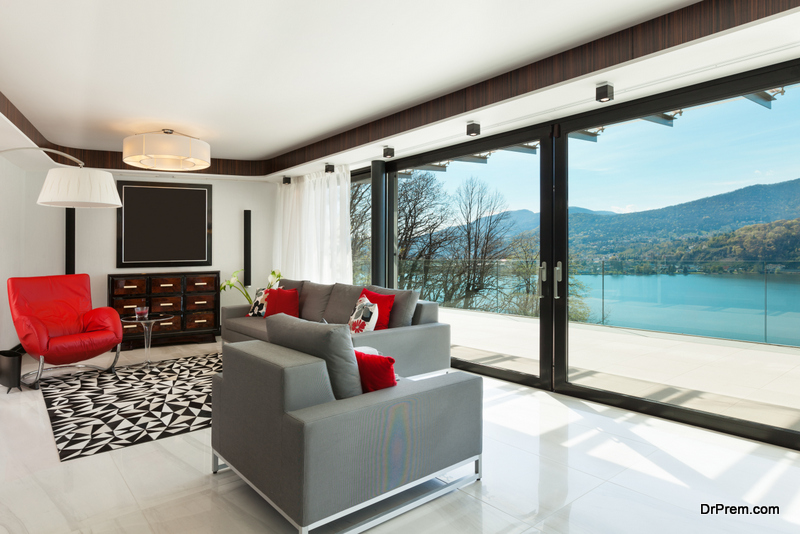 Comfort never takes a backseat in the case of a passive home. Passive homes achieve the perfect balance between quality and comfort, with neither overtaking the other. These homes make use of myriad energy sources within the building, including solar heat and even individual body heat to heat up the home during winter.
Comfort never takes a backseat in the case of a passive home. Passive homes achieve the perfect balance between quality and comfort, with neither overtaking the other. These homes make use of myriad energy sources within the building, including solar heat and even individual body heat to heat up the home during winter.
The use of proper insulation on the roof, exterior walls and floor slab will also help retain heat in winter and keep out the heat during summer. Proper ventilation systems will help allow plenty of fresh air to entire the room, thus improving indoor air quality considerably.
3. High Quality
 The airtight design and insulation of a passive house enables it to be very energy efficient. In addition to this, the thermal bridge free design employed during construction of a passive home gets rid of weak spots that could lead to heat loss or cold corners. This, in turn, would make the home enjoy high energy efficiency to a great extent.
The airtight design and insulation of a passive house enables it to be very energy efficient. In addition to this, the thermal bridge free design employed during construction of a passive home gets rid of weak spots that could lead to heat loss or cold corners. This, in turn, would make the home enjoy high energy efficiency to a great extent.
4. High level of Sustainability
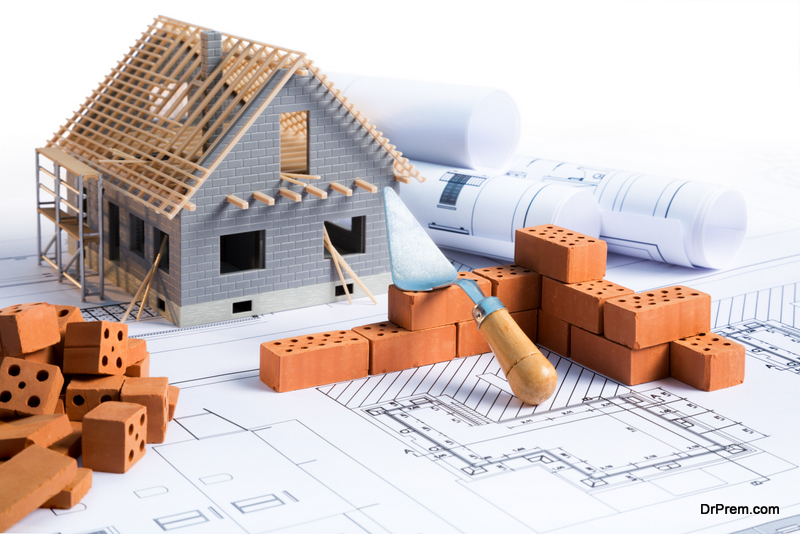 Passive homes use very less energy both during construction and afterwards. This easily makes them one of the most sustainable types of accommodation for current and future generations. By giving back to the environment in more ways than one, a passive house will surely provide future generations and safer and healthier world to live in.
Passive homes use very less energy both during construction and afterwards. This easily makes them one of the most sustainable types of accommodation for current and future generations. By giving back to the environment in more ways than one, a passive house will surely provide future generations and safer and healthier world to live in.
5. High Versatility
 There is no need to build a passive home from scratch. Such is the versatility of the passive home design that it can be easily integrated into existing and old buildings as well. In addition to homes, the passive home standard can also be incorporated into other buildings like schools and administrative offices. You can also choose to make only a portion of your home passive while leaving the rest of it relatively untouched.
There is no need to build a passive home from scratch. Such is the versatility of the passive home design that it can be easily integrated into existing and old buildings as well. In addition to homes, the passive home standard can also be incorporated into other buildings like schools and administrative offices. You can also choose to make only a portion of your home passive while leaving the rest of it relatively untouched.
6. Affordability
 And finally, affordability! While the cost of building a passive home or renovating your home to meet passive home standards can be a bit high, the return on investment of the same is literally double. If you take this as a measure of affordability, then passive homes are definitely one of the more affordable house designs in the market today.
And finally, affordability! While the cost of building a passive home or renovating your home to meet passive home standards can be a bit high, the return on investment of the same is literally double. If you take this as a measure of affordability, then passive homes are definitely one of the more affordable house designs in the market today.
Top 3 Pointers to note for Passive Home Builders
Now that you have found out the myriad benefits you stand to enjoy with a passive home, here are some pointers you need to take into consideration when building your very own passive house.
1. Choose the Site Carefully
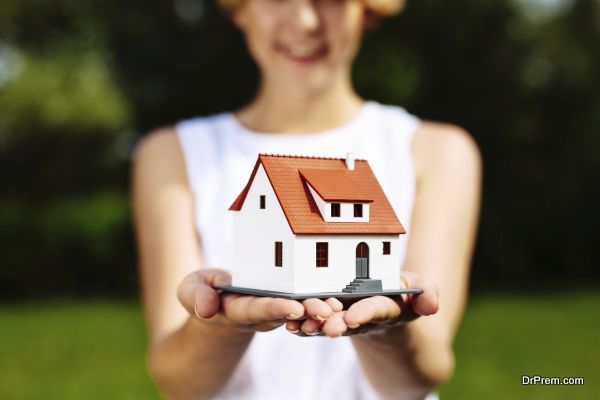 Passive homes require unobstructed views of the sun on the south side. Hence, your choice of site selection for your passive home would include an area that does not have room for growth (in the form of trees or buildings that can block your home from the sum’s view) on the south side in the future. Sites that are deep from north to south or on the north end of the lots are good locations for a passive home.
Passive homes require unobstructed views of the sun on the south side. Hence, your choice of site selection for your passive home would include an area that does not have room for growth (in the form of trees or buildings that can block your home from the sum’s view) on the south side in the future. Sites that are deep from north to south or on the north end of the lots are good locations for a passive home.
2. Choose the placement of the windows properly
 Passive homes use solar energy for power. Hence, your choice of window placement should be in lieu with the home’s ability to harness solar energy. While south facing windows would be a welcome addition to your home, east and west facing windows are best avoided as they lose energy.
Passive homes use solar energy for power. Hence, your choice of window placement should be in lieu with the home’s ability to harness solar energy. While south facing windows would be a welcome addition to your home, east and west facing windows are best avoided as they lose energy.
3. Choose proper insulation
 The efficiency of a passive home depends on how much insulation is packed into it. Proper insulation will keep out the heat in summer and the cold in winter. Hence, your choice of insulation for your passive home should guarantee to make the space airtight.
The efficiency of a passive home depends on how much insulation is packed into it. Proper insulation will keep out the heat in summer and the cold in winter. Hence, your choice of insulation for your passive home should guarantee to make the space airtight.
More homeowners are opting for passive homes these days owing to the energy efficiency and eco-friendly benefits involved. You can make your home a passive abode too with some rather simple construction/renovation tips.
Examples of Passive House
1. O’Neill’s Passive House
 Claiming to be the first Certified Passive House in California and the first passive house retrofit project in the U.S., the “O’Neill Passive House” flaunts an energy-efficient, classy and green design. The 2,400-square-foot ’60s-era home sports eco-friendly features like airtight construction, triple-glazed windows, high levels of insulation, passive solar design and an energy recovery ventilation system.
Claiming to be the first Certified Passive House in California and the first passive house retrofit project in the U.S., the “O’Neill Passive House” flaunts an energy-efficient, classy and green design. The 2,400-square-foot ’60s-era home sports eco-friendly features like airtight construction, triple-glazed windows, high levels of insulation, passive solar design and an energy recovery ventilation system.
The small smart two-bedroom passive home is a cozy, comfortable farmhouse that is spiced up with modern techniques. It consumes energy equivalent to a standard hair dryer. The owner Cathy O’Neill pays just $20 to $30 as her monthly utility bill. The super-efficient features of the building have helped this stunning house win “This Week’s Green House” honors on Wendy Koch’s Green House blog on USATODAY.com.
2. Tianjin’s zero-energy ‘Sunflower’
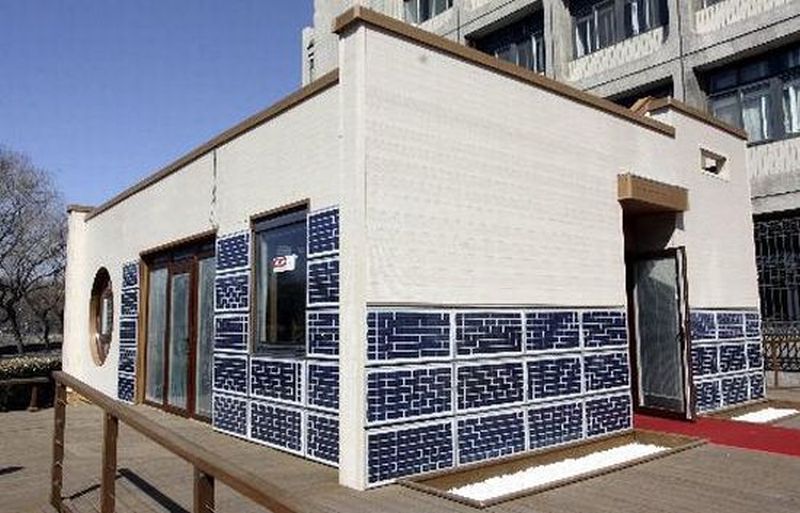 Featuring an energy-saving kitchen and a very efficient recycling toilet system, the future home created by the Tianjin University for Solar Decathlon 2010 will be a zero energy consuming construction. The solar house is supplied with auto-control for maintaining a constant temperature and humidity. The fully solar-powered home, dubbed as Sunflower, was completed this Thursday.
Featuring an energy-saving kitchen and a very efficient recycling toilet system, the future home created by the Tianjin University for Solar Decathlon 2010 will be a zero energy consuming construction. The solar house is supplied with auto-control for maintaining a constant temperature and humidity. The fully solar-powered home, dubbed as Sunflower, was completed this Thursday.
Laying special emphasis on architectonic, exploring suns movement to gather maximum energy, a profusion of passive solar technologies, and finally integrating both active and passive solar systems, the unique house employs these advanced technologies to improve the overall energy and environmental performance of the building. The team members have done great job in developing the aesthetic aspect of the architecture to the fullest.




